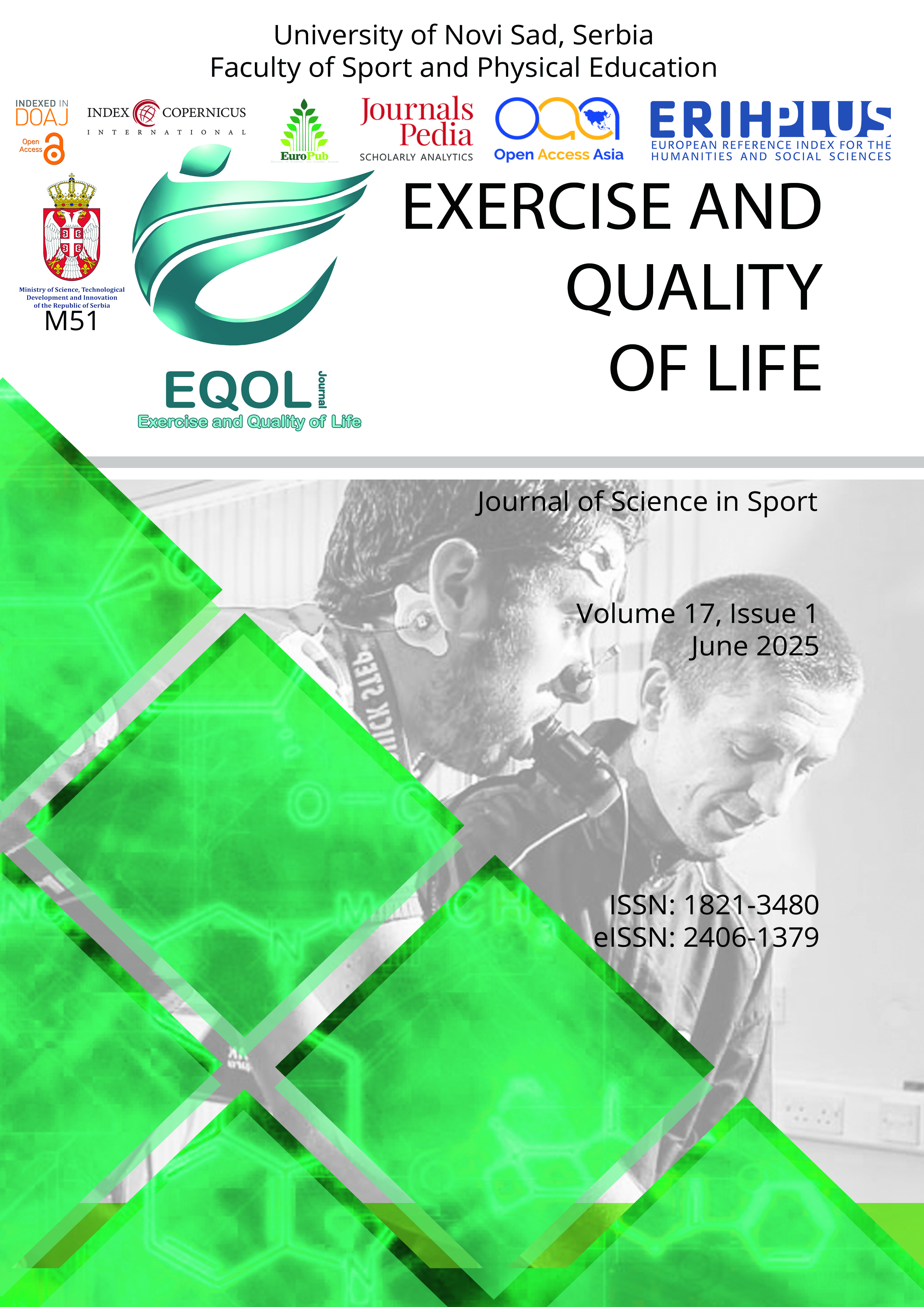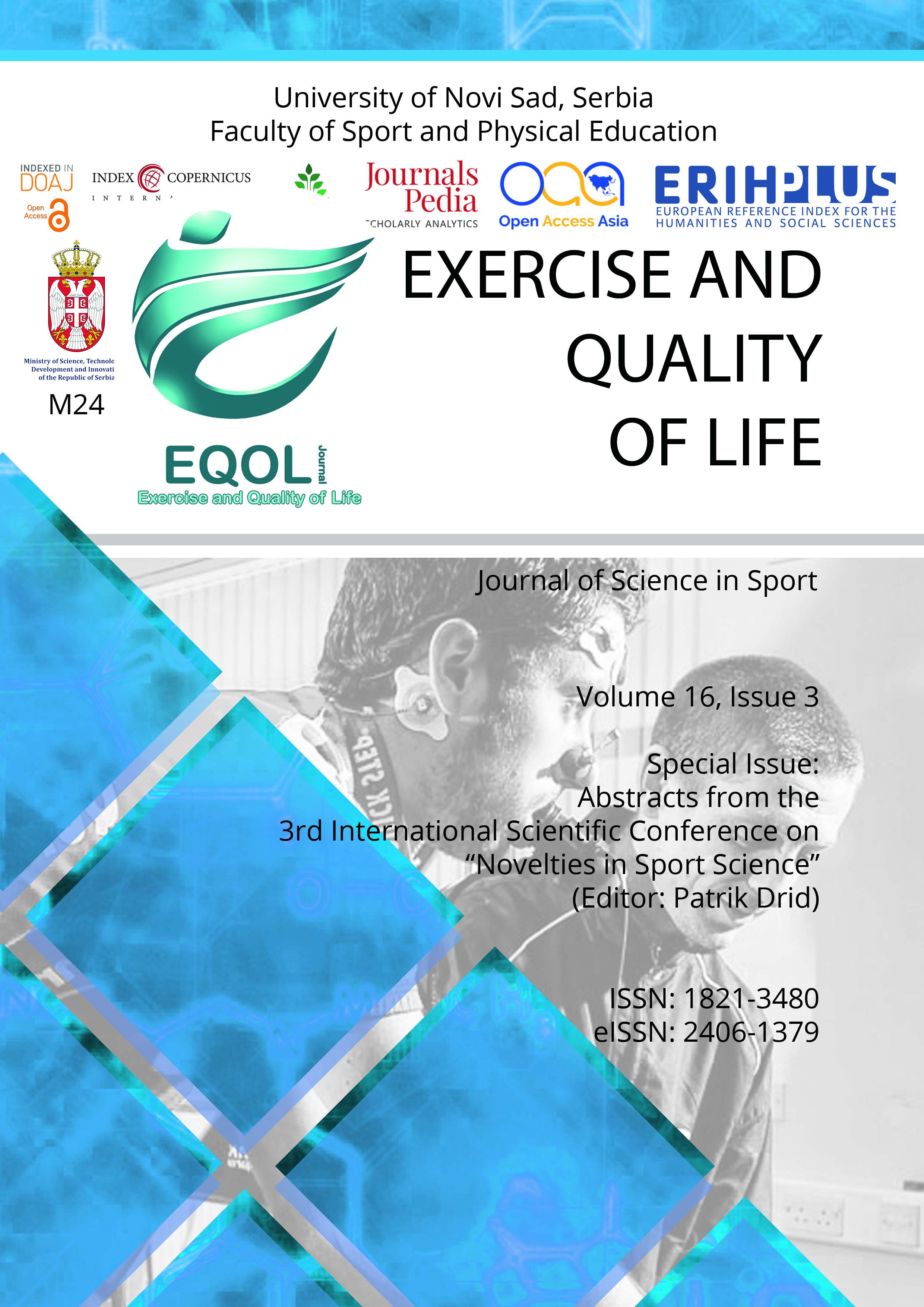Current issue

Volume 17, Issue 1, 2025
Online ISSN: 2406-1379
ISSN: 1821-3480
Volume 17 , Issue 1, (2025)
Published: 15.06.2025.
Open Access
All issues
Contents
01.06.2013.
Original scientific paper
The application of fractional Zener model on MCL
On the basis of recently published experimental results of Abramowitch et al. (2004), dealing
with viscoelastic properties of sham operated and healing MCL, we show that the fractional Zener
model of viscoelastic body seems to be very tractable tool for rheological description of different
states of biological tissues. In this paper medial collateral ligament of the knee will be described
by means of the method of Dankuc et al. 2010, who examined middle ear structures and ramp-and
hold stress relaxation experiments. Two different states of MCL were described by four different
constants representing modulus of elasticity, the order of fractional derivative and two relaxation
constants. Predictions of the model are in good agreement with the experimental results.
Nada Santrač, Jasmina Pavkov
02.12.2013.
Original scientific paper
DIFFERENCES IN MOTOR ABILITIES OF CHILDREN IN RELATION TO GENDER AND AGE
Six motor tests were applied on a sample of 48 children (33 boys and 15 girls) 5 and 6 years of
age (± 6 months), who attended sports school twice a week, in duration of one hour. The primary
objective of this study was to determine differences in motor skills of preschool children. Results
of multivariate multi-factor analysis of variance (MANOVA) show no statistically significant
differences in the overall system of analyzed motor variables in relation to gender and age
regarding the studied sample of children. Analysis of individual motor skills, using the procedure
of univariate multi-factor analysis of variance (ANOVA), revealed no statistically significant
differences in relation to gender and age factors. With respect to the age factor, a statistically
significant difference was obtained for variables: 20 meters dash, obstacle course backwards and
standing broad jump, in favor of the 6-year old children. With respect to the gender factor, a
statistically significant difference existed only for the variable seated straddle stretch in favor of
girls.
Miroslav Polimac, Mila Vukadinović, Jelena Obradović
02.12.2013.
Original scientific paper
SPRINTING SPEED OF PREPUBERTAL GIRLS AND BOYS
The research problem was to analyze manifestation of sprinting speed and to compare the results
obtained in prepubertal children in relation to gender. The aim of this study was to analyze the
basic motor ability related to velocity in children before puberty. The study was conducted on the
sample of 71 subjects who were divided into two subgroups: 37 boys and 34 girls, aged 9 years
+/- 6 months. Three tests were applied for measurement of sprinting speed: time running 10
meters, high start time running 20 meters, high and start time running 20 meters flying start. The
results showed that there was no statistically significant difference between subjects with respect
to gender, in all three tests applied to estimate sprint speed at the level of p <0.05. On this basis, it
was concluded that prepubertal period of half of the respondents in the prepubertal period, as a
criterion, does not constitute a basis for a statistically significant difference in the exercise of
sprint speed.
Vladimir Jakovljević, Adriana Ljubojević, Tamara Karlić, Nikolina Gerdijan, Željko Vukić, Goran Pašić
02.12.2013.
Original scientific paper
MENSTRUAL CYCLE AS AN OBSTACLE TO ACHIEVING MAXIMAL SPORT RESULT
Each woman has different characteristics of menstrual cycle. The main problem is the
determination of period in which the measuring would be carried out, so that the results could be
directly linked to a certain hormone or phase of the menstrual cycle. Generally it could be said
that menstrual cycle does not influence muscle contractility and maximum oxygen consumption,
lactate level, heart rate, breathing volume, hemoglobin levels. Therefore, women who compete in
anaerobic and aerobic sports do not have to adjust competition schedules to their menstrual cycle.
On the other hand the increase of body temperature in the luteal phase of the menstrual cycle,
possible cardiovascular strain in this phase, influence of progesterone on the respiratory center,
the rise of breathing frequency and volume can have negative influence on long-term intensive
sport activities. For this sort of activity female athletes are recommended to adjust their
competition schedule to menstrual cycle.
Milan P. Mladenović, Vedrana V. Karan, Aleksandar V. Klasnja, Jelena Z. Popadic Gacesa, Otto F. Barak, Olivera R. Markovic, Olivera R. Markovic
02.12.2013.
Original scientific paper
JUMPING ABILITIES IN YOUNG FEMALE GYMNASTS: AGE-GROUP DIFFERENCES
The aim of the study was to give more informations about jumping abilities of young
female gymnasts. We examine age-related differences in some variables of counter-movement
jump (CMJ) and counter-movement jump with arm swing (CMJA), between two age categories
of young female gymnasts (n=47) and also reliability of testing vertical jump in gymnasts. The
study was conducted on an international competition. Our research has shown that age-related
differences were observed only in height of the jumps, but not in power output of both jumps and
displacement of depth of body’s center of gravity. Jumping capabilities are crucial in gymnastics
in all levels of competitions and in all categories of gymnasts. Testing and periodical monitoring
of young athletes’ abilities are important for defining the training programmes adapted to the
needs of gymnastics and the age of the gymnasts.
Aleksandra Aleksić-Veljković, Dejan Madić, Mila Vukadinović, Katarina Herodek, Kamenka Živčić Marković
01.06.2012.
Original scientific paper
SPOUSAL APPROVAL OF RECREATION AS AN INDICATOR OF MARRIAGE QUALITY AND STABILITY
The aim of the study was to determine if and to what extent equal point of view of
spouses regarding recreation can be seen as a significant indicator of the quality and stability
of marital relationship in our society. For this purpose 436 women, who live in marriage or
non-marital cohabitation, aged 19- 64, were tested. The differences among the tested women
who share the same attitude about recreation with their spouses and those who do not, were
tested by discriminatory analysis regarding the following: different demographic variables, general satisfaction with the marriage and marital relationship, different aspects of the quality
of the marital relationship, style of affectional bond, marital locus of control, differences in
judgement of personal and spouseís values, presence of stressful events, strategies for
overcoming the stress, stability of the marriage and intention to seek professional
psychological help. Statistically significant discriminatory factor (rc=0.54; p= 0.00) was
obtained which is interpreted as harmonious in contrast to the conflict prone marital
relationship. The main conclusion of the research is that the spousal approval of recreation
represents a good indicator of general harmony in a marital relationship.
Jelena Šakotić Kurbalija, Dragan Kurbalija
01.06.2012.
Original scientific paper
AGE-RELATED CHANGES OF RUNNING STRIDE KINEMATICS IN 7 TO 18 YEAR - OLD YOUTH
The research deals with cross-section analysis of ontogenetic characteristics of basic
kinematic parameters of the running stride in terms of age and gender from 7 to 18 years of
age. There were monitored: average velocity, stride frequency and length, duration of support
and flying phase, as well as other derived indicators at 10 m with 15 m flying start. Sample
consisted of 1299 male and 1288 female students of elementary and high schools in
Bratislava. Authors determined high age dependency of running speed and stride length on
age. On the other hand, there was high ontogenetic stability of the indicators (stride
frequency, duration of support and flying phase) in the population of 7 to 18 year-old youth. Ontogenetically stable parameters deteriorated partially in prepubescent and at the beginning
of the pubescent period in the age 11 ñ 15. This relates to rapid growth of body height and
weight and deterioration of biomechanical and coordination conditions of an organism. Those
finding lead the authors to the conclusion, that ontogenetically stable indicators comprise so
called dispositional factors in evaluating the rate of talent for running speed.
Marian Vanderka, Tomaš Kampmiller
01.06.2012.
Original scientific paper
RELATIONSHIP BETWEEN MORPHOLOGICAL CHARACTERISTICS AND MOTOR ABILITIES OF BOYS AND GIRLS AGED FROM 11-14 IN THE PROVINCE OF VOJVODINA
The aim of this study was to examine the relationship between morphological
characteristics and motor abilities of boys and girls aged from 11 to 14 so that the process of
physical education could be in line with the dynamics of growth and development as well as
the differences between the sexes. The total sample consisted of 730 subjects, divided into
four age groups of 11, 12, 13 and 14. Eight motor tests were conducted and 9 anthropometric
measures were taken. The boys of all ages achieved better results in tests of coordination, repetitive and explosive power, while girls of all age groups scored better in flexibility tests. The largest differences between the sexes at the ages of 11 and 12 years were the results of
variables evaluating motor abilities. At the age of 13, a significant difference in skinfold
thickness was found in favor of girls and at the age of 14 in the voluminousness in favor of
boys. In boys aged from 13 and 14, the increase in body volume was negatively correlated
with the increase in skinfold thickness, indicating that the increase of voluminousness is
caused by the increase of muscle mass. It is therefore concluded that the linear increase of the
differences in motor performance tests under 14 years of age is caused by increased muscle
mass in boys, especially in tests where achievement depends on the strength and production
of force.
Igor Beretić
01.06.2012.
Original scientific paper
DIFFERENCES IN SOME MORPHOLOGICAL CHARACTERISTICS AND THIGH MUSCLE FORCE OF BOUNCE LEG BETWEEN FOOTBALL PLAYERS AND GOALKEEPERS
The aim of this study is to determine the differences in certain morphological
characteristics and thigh muscle force of bounce leg between football players and
goalkeepers. The examined group consisted of 15 goalkeepers and 14 players, aged 15 ñ 18
years, from Vojvodina cadet league. Five parameters were tested by means of isokinetic
dynamometer, and 6 morphological factors were measured. The differences between sub
samples were gained by multivariable and univariable analysis of variance. Multivariable
analysis was used to determine significant difference at the level (p =.00), and we determined
statistically significant difference on individual basis in body height and in muscle mass
percentage. Almost equal results in thigh muscle force of bounce leg among the subjects and
no difference in other variables can be explained by identical training process for players and
goalkeepers. The data gathered demonstrate that in the future it will be necessary to
implement different training process, specially designed for goalkeepers.
Živko Kalentić, Dragana Golik-Perić, Nenad Sudarov, Vojin Jovančević
01.06.2012.
Original scientific paper
INFLUENCE OF COMPLEX TRAINING ON EXPLOSIVE POWER OF KNEE EXTENSOR MUSCLES OF BASKETBALL JUNIORS
The aim of this paper is to establish the effects of an experimental treatment, so called
ìRussian complexî on explosive leg power of the basketball players belonging to the
experimental group. Explosive leg power was measured on the sample consisting of 40
basketball players from the Serbian league: 20 basketball players from the experimental group
and 20 from the control group, all aged between 16 and 18. The experimental group was the
subject of the experimental treatment, so called ìRussian complexî, which included gym
exercises and took place twice a week during the period of ten weeks. The results of the
univariate analysis of covariance indicated that the experimental programme led to a
statistically significant improvement of all three motor variables used for the evaluation of
explosive leg power (Sargent Jump Test, Standing Triple Jump and Standing Jump) in the
experimental group of examinees, in comparison to the control group.
Dejan Javorac





























